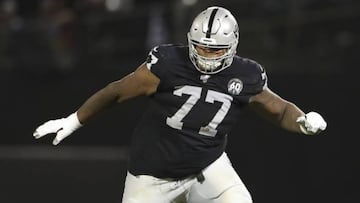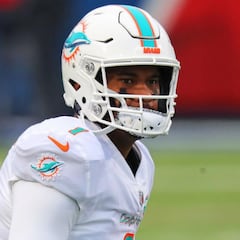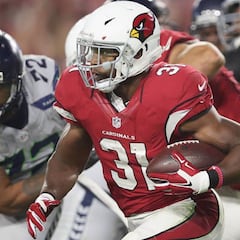Why are NFL players so big, and do they have more body fat than in the past?
What is the body composure of the modern American football players, and how much does it differ from playing in the defensive or the offensive line.


Football is undeniably a sport with different athletes' types and necessities. There is running, throwing, tackling. But why then do NFL players shuffle around the field with bodies that cannot always fit in the description of a "jacked" type?
NFL news:
- Former packers QB Brett Favre repays $600k of $1.1m tied to welfare fraud scheme
- Report: Cardinals DE J.J. Watt could miss rest of season
- Who's left for Rodgers after Adams, Lazard out due to COVID
- Watt joins long list of players out for Packers vs Cardinals game
- Prescott's practice limited, questionable for Vikings game
It is not unfamiliar to see guys preparing for a snap having love handles, plump midsections, and chubby thighs. Coincidentally these are all benefits when attacking and grabbing people. In football, bigger is better and doesn't necessarily mean fat — even though the numbers might show oppositely.
"Dad bod" athletes
A 2008 study from the Journal of American College Health assessed 81 NCAA football players based on their body mass index (BMI), a ratio that defines obesity based on height and weight. Eighty-one percent of football players — in particular, offensive and defensive linemen — surveyed had BMIs that fell in the category of being clinically obese.
But BMI is not a foolproof way to judge a person's health. As this study showed, the men classified as obese performed strength and agility tests exceeding "average" men. While science found them to have "dad bods," these guys were agile and robust. The researchers' point was made clear: BMI alone is not a good indicator of the health status of strength-trained athletes.
Different positions - different requirements
In the sport of football, some player positions demand disproportionate amounts of weight to excel. For example, offensive linemen need to be too big to push and to be effective. Also, defensive linemen need to be too big to be stopped. The problem is that an average human cannot build sufficient muscle mass to become so heavy. The best example is sumo. The bigger a sumo wrestler is, the more powerful he is; it is more difficult moving him. Basically, it is the same principle. Being big makes blocking easier, especially pass protection.
These so-called fat guys in the offensive line are usually 6′4″ to 6′9″ between 300–350 pounds, with long arms, and solid. Think of this five-person unit as an impassable brick wall; if it breaks down, the whole team breaks down. If their quarterback stays upright and manages to pass the ball, then they've done their job successfully.
An offensive lineman that appropriately defends and protects his quarterback is the second-highest-paid position player in the NFL (after the quarterback). And he does it with brute strength, intimidating size, and reliable technique.
Body trend
Related stories
Several studies that have been done in the past have shown an increasing body mass trend, but not in all positions as we might think. The highest increase in body mass and BMI came with the two positions we wrote about, the linemen, defensive and offensive. The studies found that the offensive lineman saw an increase of 5-7% in body fat in the last three decades. They are also heavier, fatter, slower, and stronger than offensive and defensive backs, while the backs are faster, leaner, more potent than the linemen. Linebackers and tight-ends fall in between most categories due to the nature of their position.
All of the studies recommend a requirement of constant health monitoring, especially the retired players who have a developed predisposition for diabetes, cardiovascular, and hypertension problems in their post-career life.

